Please click here to access the main AHDB website and other sectors.
- Home
- Knowledge library
- Biological features of the leafminers, Tuta absoluta and Liriomyza spp.
Biological features of the leafminers, Tuta absoluta and Liriomyza spp.
There are two types of leaf-mining insects that may be found in UK tomato crops: the moth, Tuta absoluta, and the flies, Liriomyza spp. The most common fly is Liriomyza bryoniae but growers should also be aware of two non-indigenous fly species, L. huidobrensis and L. trifolii, which are notifiable in the UK.
Tuta absoluta
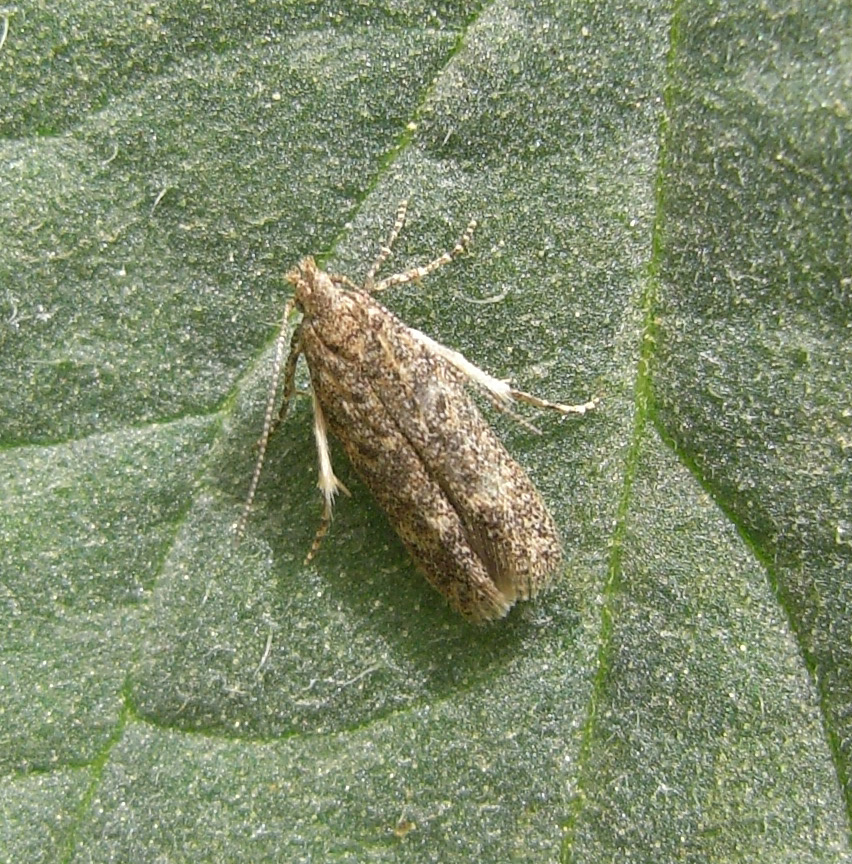
© Dupont
Adult Tuta absoluta are 6–7 mm long and have grey-brown speckled wings, which are folded along their back while at rest. The antennae and legs are relatively long and ringed with black and brown bands. They are nocturnal and rarely seen during the day unless there is a very large population present in the crop.
Liriomyza spp.
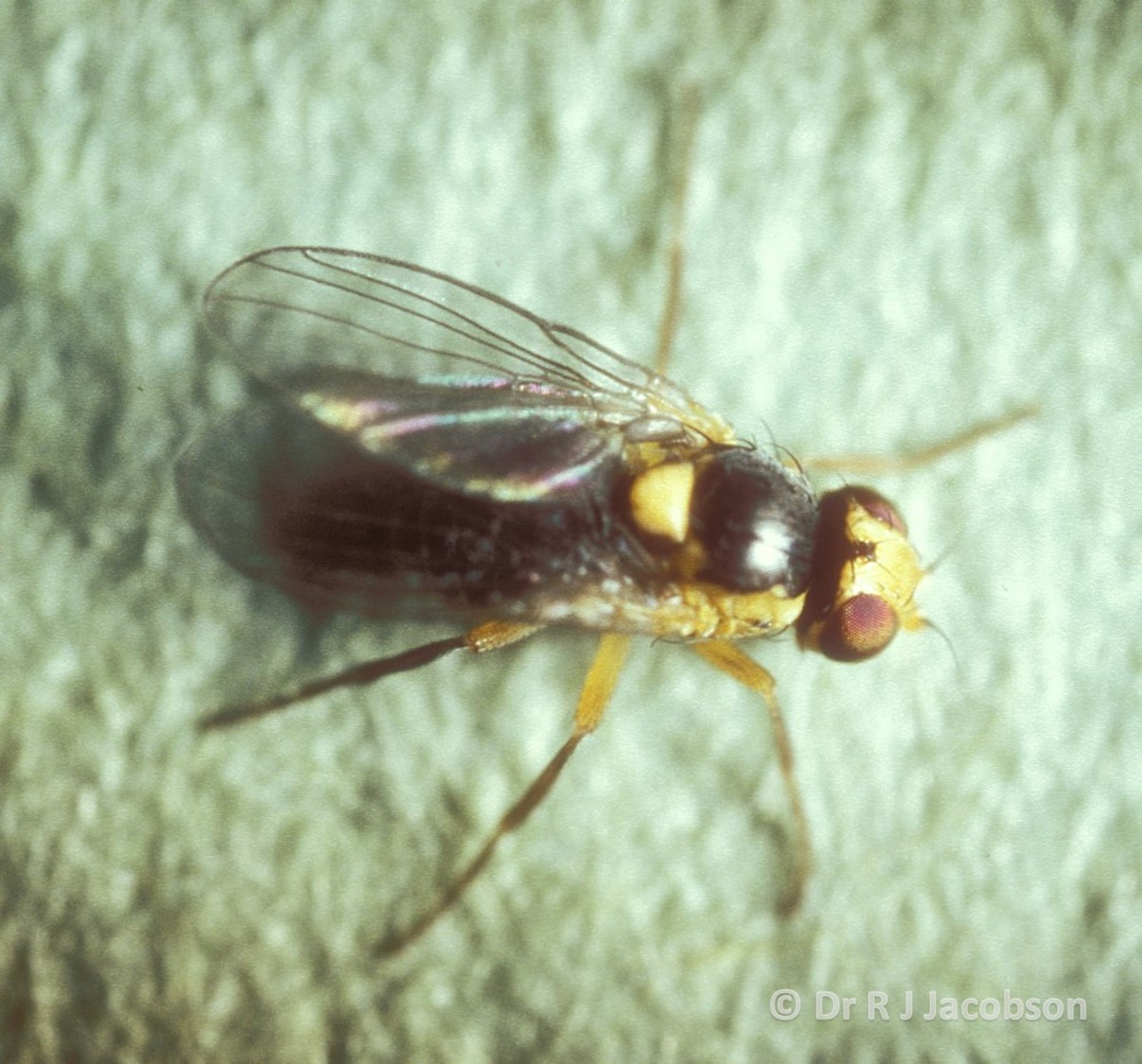
Courtesy of Dr R J Jacobson
Adult Liriomyza spp. are small (2 mm), robust flies with a yellow spot on their backs. They are commonly seen on leaves and fruit during the day. It is very difficult to distinguish between adult L. bryoniae, L. huidobrensis and L. trifolii but their larvae produce different shaped mines
Tuta absoluta
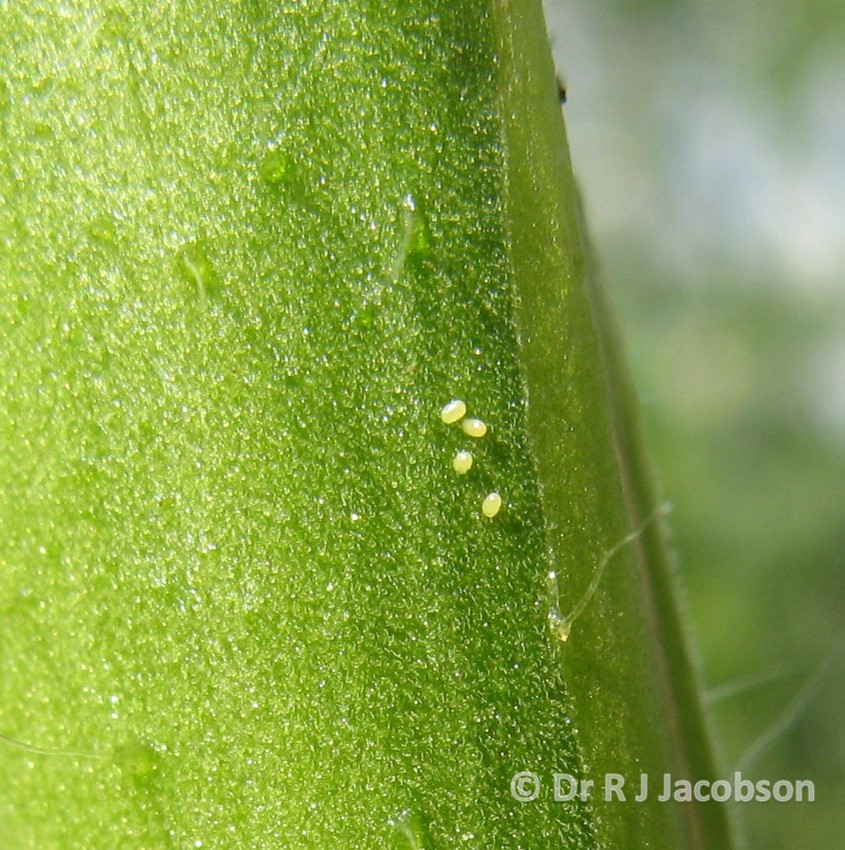
© Dr R J Jacobson
Tuta eggs are small (<1 mm) and are laid on the under-surface of leaves, petioles and stems. They are white at first, becoming yellow as the embryo develops and almost black at maturity.
Liriomyza spp.
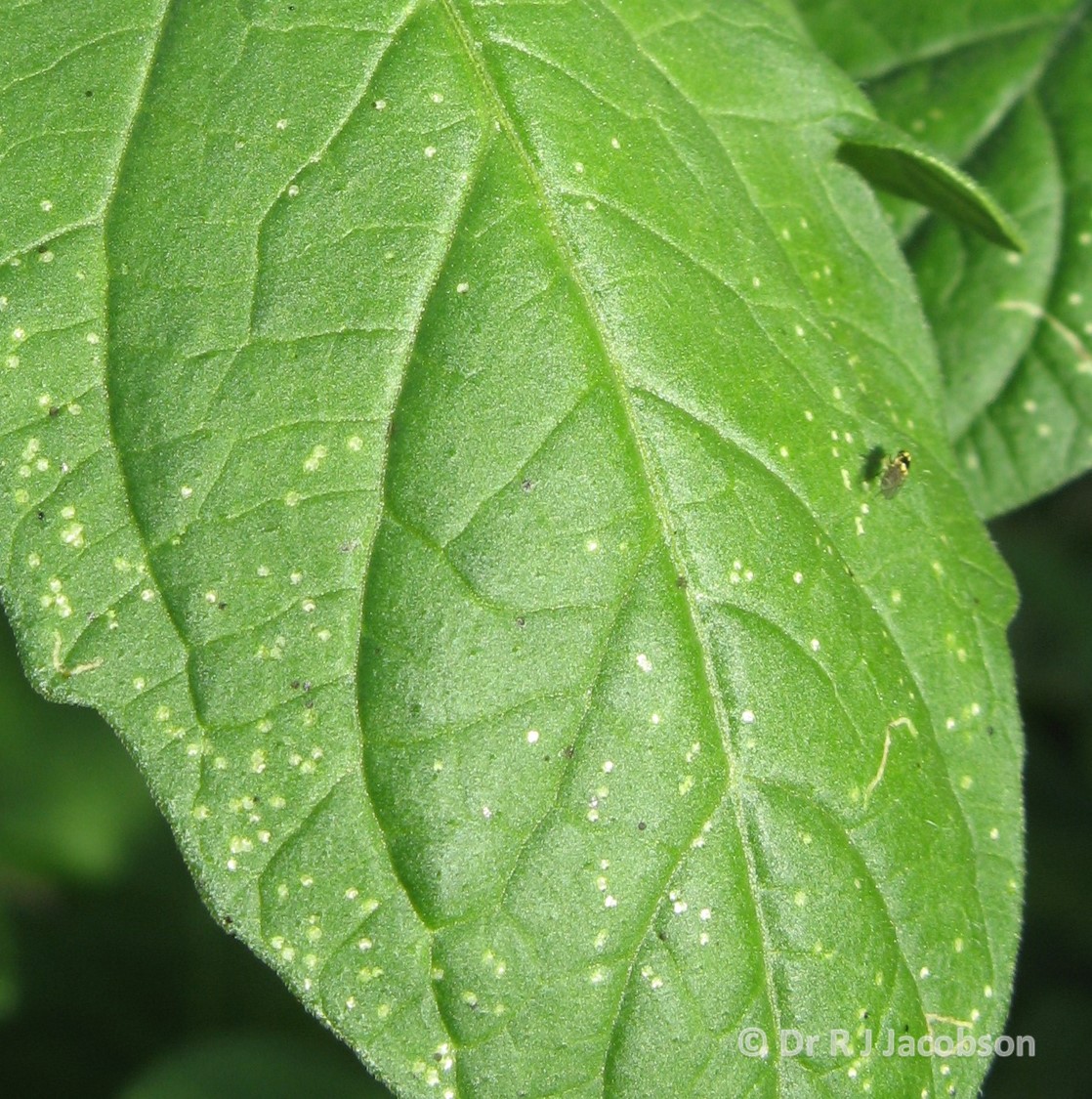
© Dr R J Jacobson
Adult Liriomyza feed on the upper-surface of leaves causing small bleached spots.
Eggs (<1 mm) are laid within the leaf at the site of some, but not all, of these feeding punctures.
Tuta absoluta
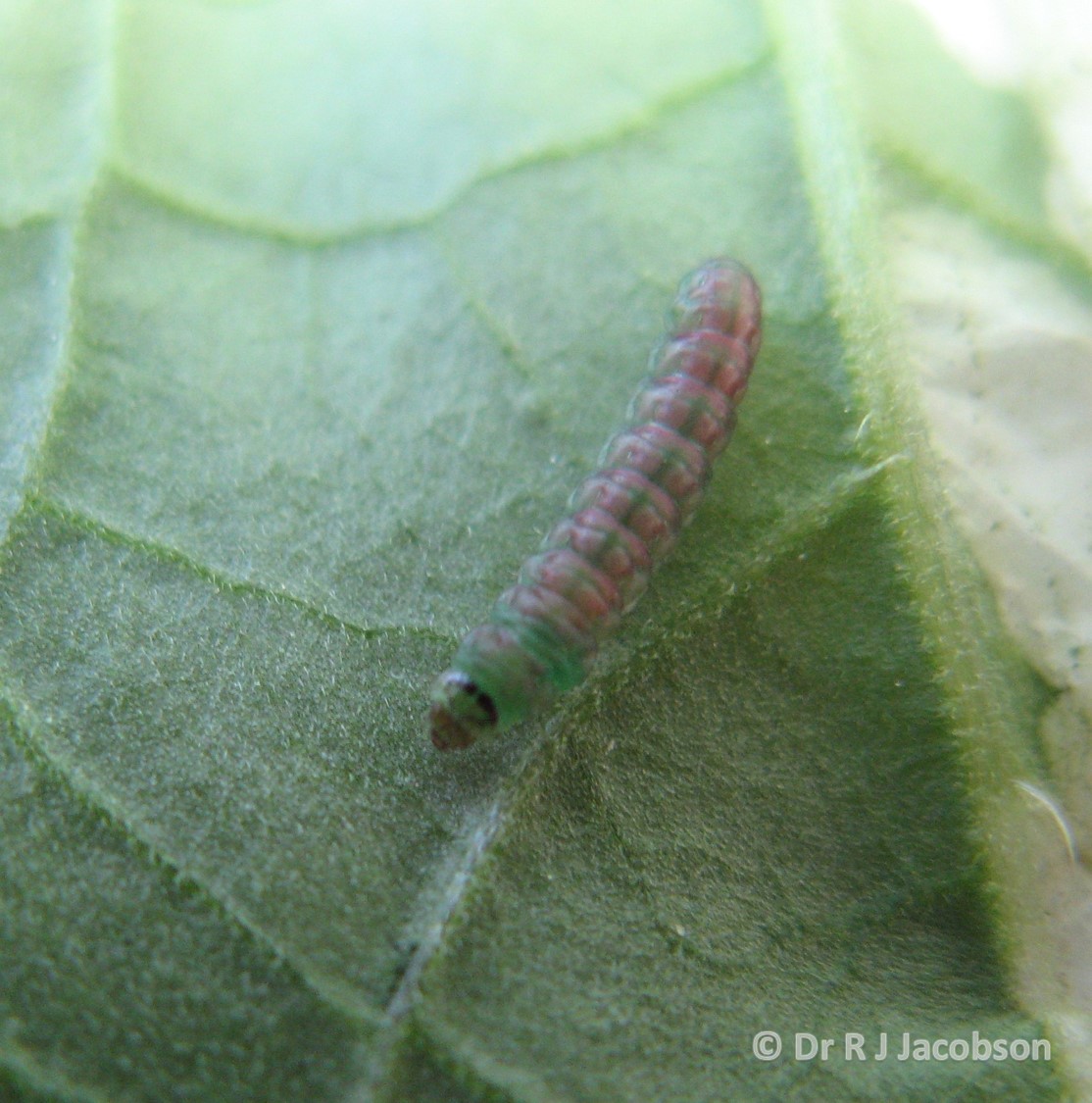
© Dr R J Jacobson
The hatching Tuta larva (<1 mm) is pale yellow and wanders on the leaf surface for a few minutes before starting to burrow. After a further 70 minutes, it is usually totally encased within the leaf. As the larva moults and grows, it becomes green with a darker band behind the brown head capsule. The fully grown caterpillar is about 9 mm.
Liriomyza spp.
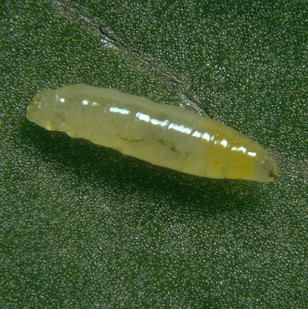
© Koppert
Liriomyza larvae complete their entire development within the leaf. They are translucent to pale yellow with no distinct head or legs. The fully grown larva is 5–6 mm.
Pupae
Tuta absoluta
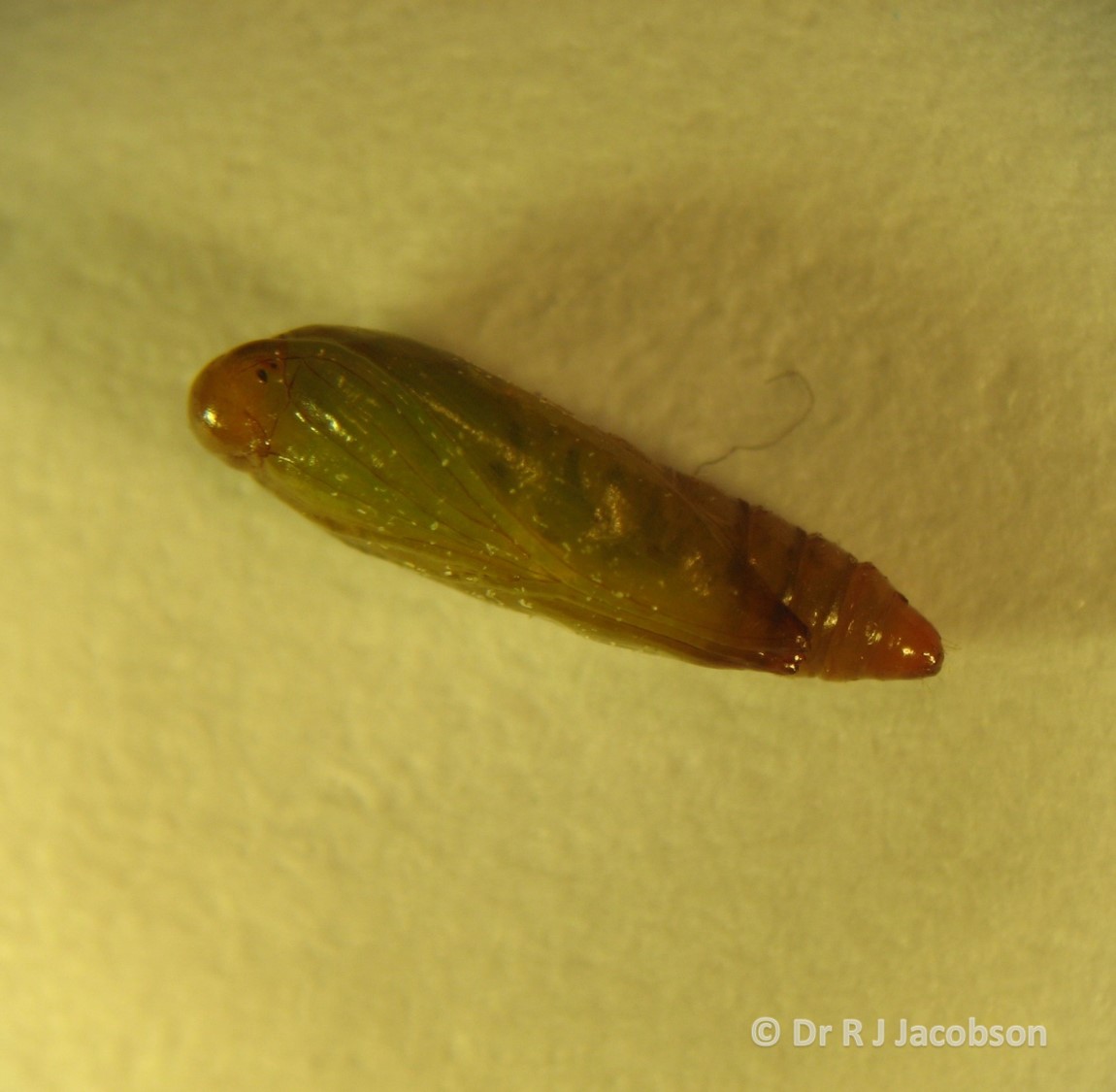
© Dr R J Jacobson
Tuta pupae are 6 mm, light brown and the outline of the developing antennae and wings can be seen on the surface. The larva usually leaves the plant, or harvested fruit, to pupate and may be found on the floor, structure of the glasshouse, fruit or packaging material.
Liriomyza spp.
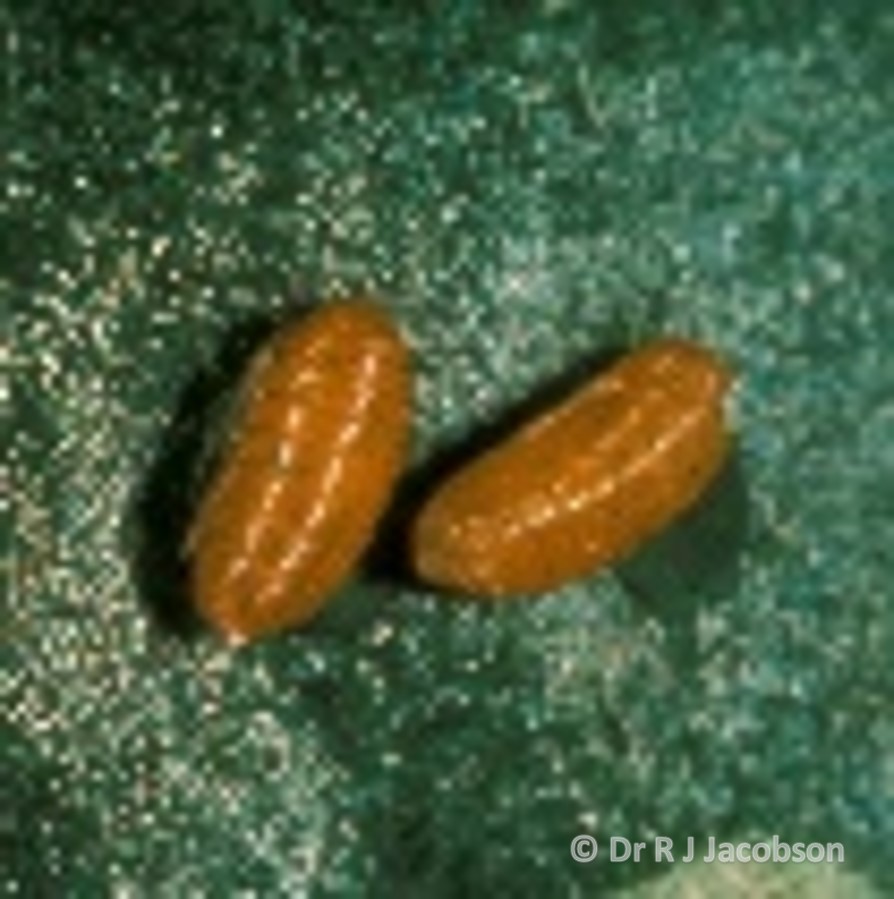
© Dr R J Jacobson
Liriomyza pupae are featureless capsules about 2 mm in length. They are pale brown at first but darken as they mature. The larva may drop from the plant to pupate or remain on the leaf – sometimes, still partly within the mine.
Cocoons
Tuta absoluta
Occasionally, a Tuta larva will pupate on an open leaf or fruit, in which case it may produce a loose silky cocoon for protection.
Liriomyza do not produce cocoons.
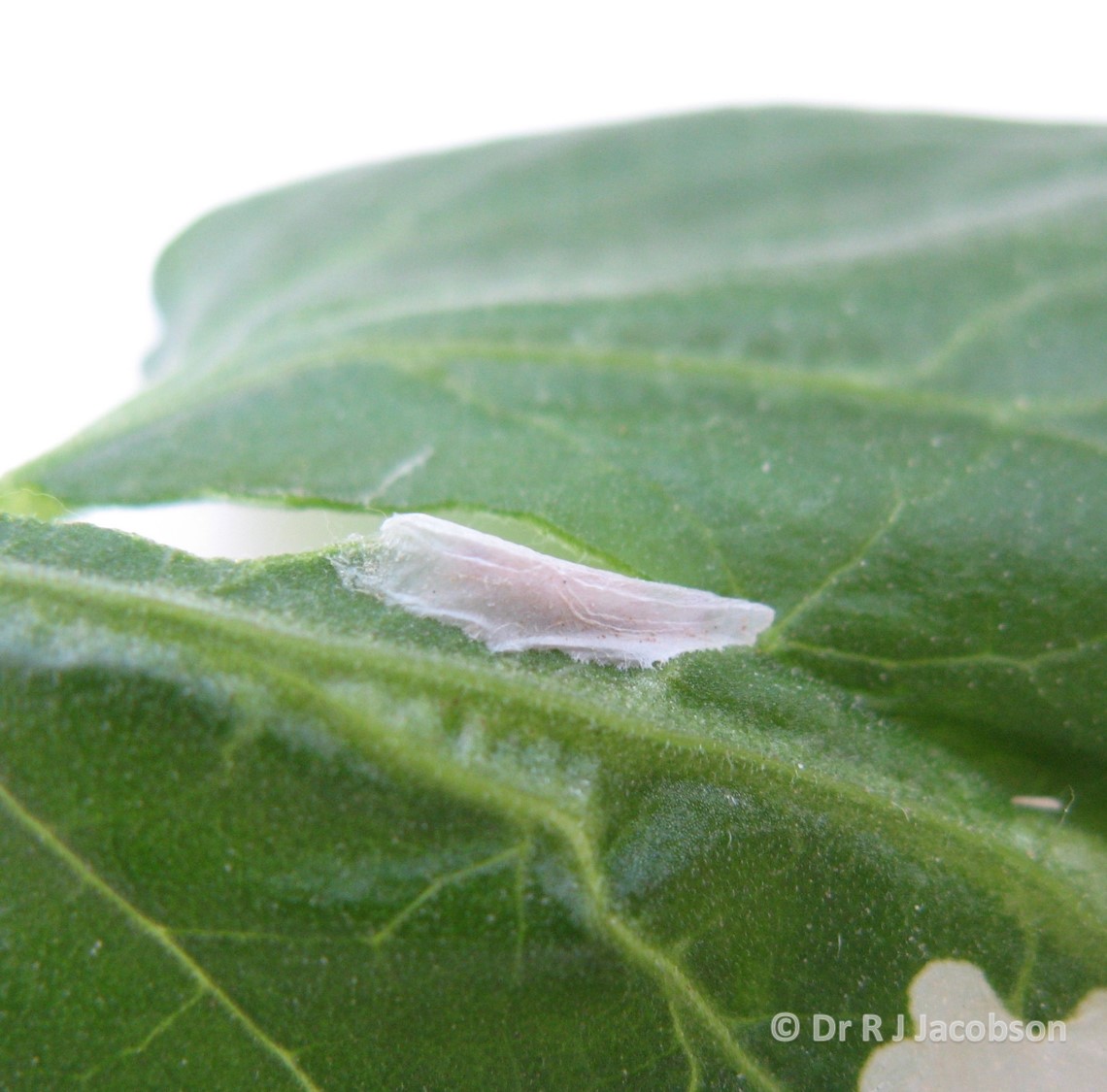
© Dr R J Jacobson
Useful links
Learn about and compare the tomato crop damage caused by Tuta absoluta and Liriomyza spp.
Read information about how to control Tuta absoluta in your crops
Find more news and information on integrated pest management via our IPM hub
Author
The content on this page was authored for AHDB by Dr Rob Jacobson (Rob Jacobson Consultancy Ltd).
Got a question? Ask a member of the team:
Topics:
Sectors:
Tags:

